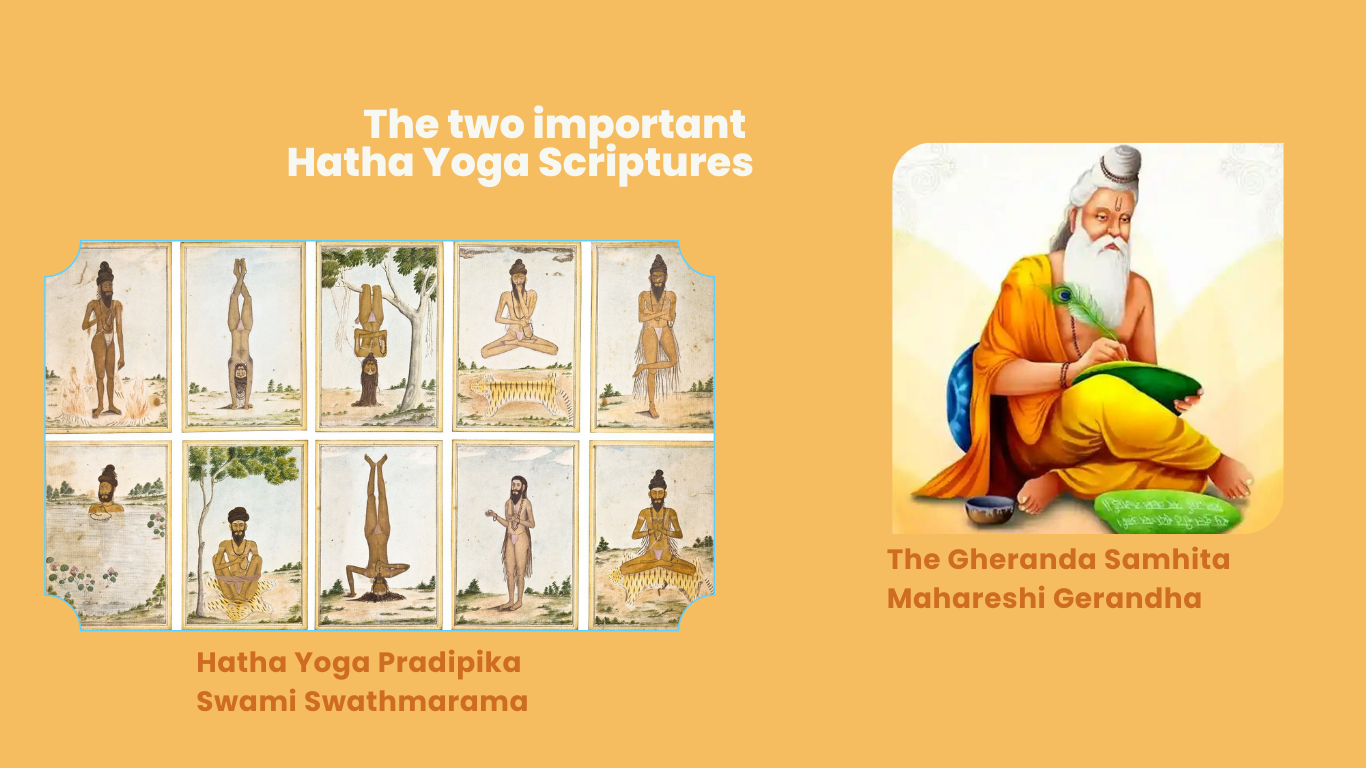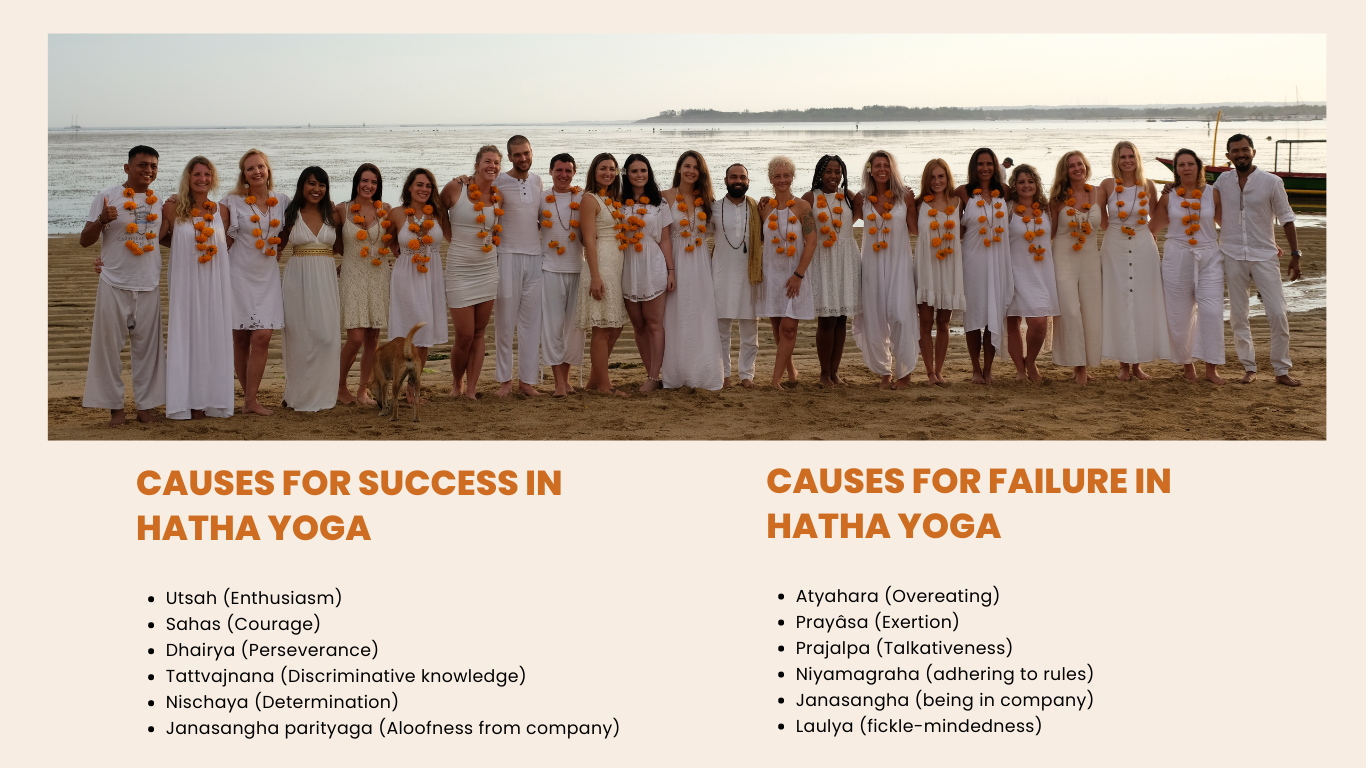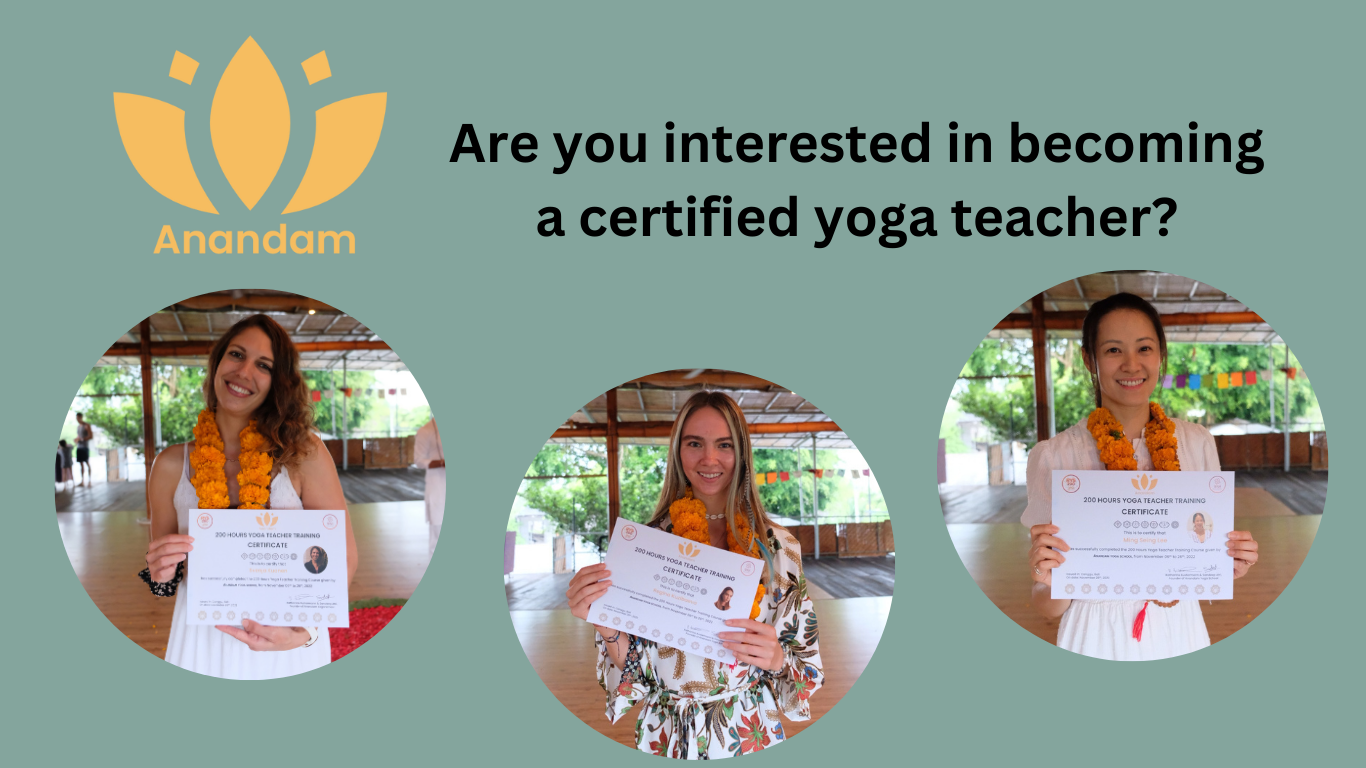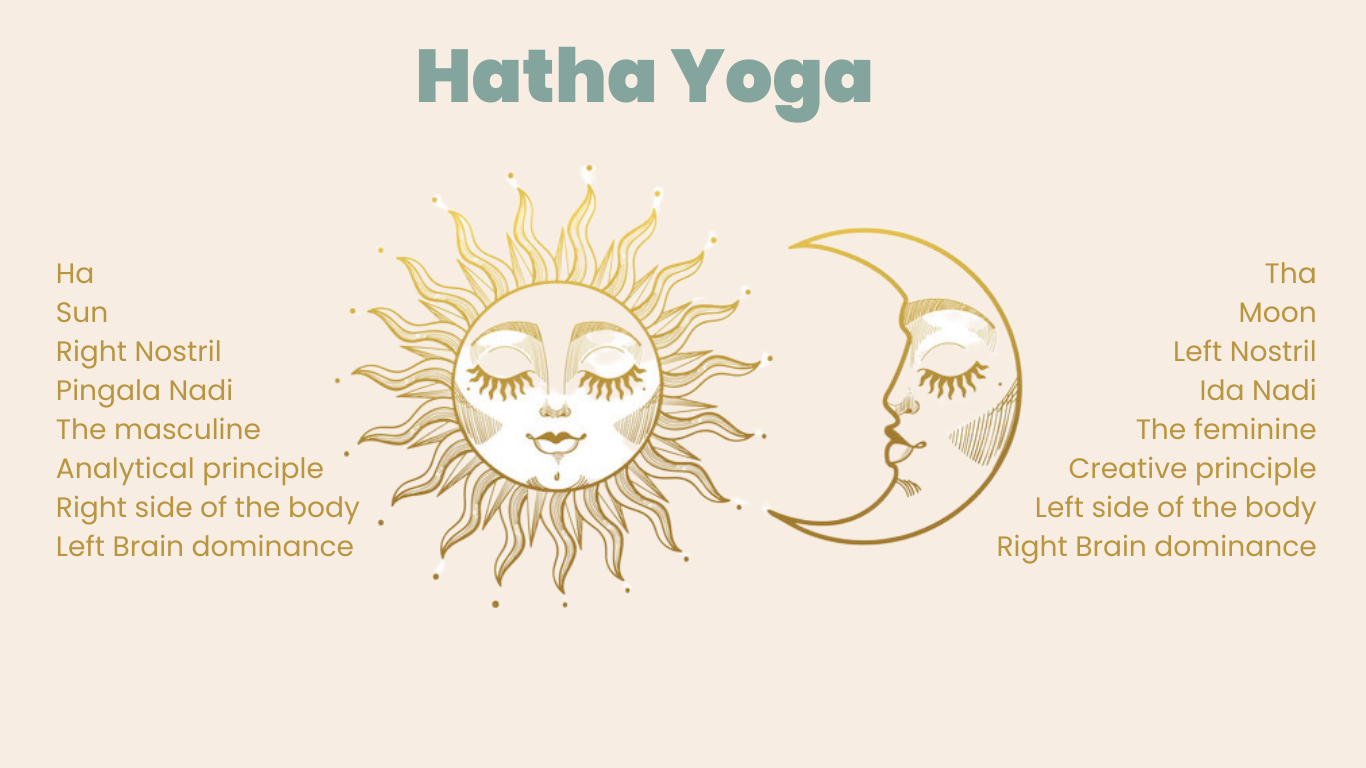Balancing energies through traditional Hatha Yoga
Did you know that Hatha Yoga literally means 'wilful' in Sanskrit? This form of yoga is practiced without the interference of the five senses and the mind, making it a 'wilful' practice that can lead to the state of Samadhi, where the yogi becomes free from the illusion of form, time, and space.
The word Hatha can be broken down into the two words Ha (sun) and tha (moon) and represents the two opposite energies - Yin and Yang, male and female, sun and moon - within the human body. Hatha practices are designed to balance these opposite energies and to align and calm our body, mind, and spirit in preparation for meditation.
Hatha Yoga is one of the four main traditions of Tantra Yoga and its ultimate goal is self-realization.
Our physical body is the first entrance point to the deeper layers of existence. It is what we can feel and touch. We experience sensations that lead us to a deeper understanding. It is the easiest point to start the journey of self-exploration.
This is where a Hatha Yoga course comes in - by purifying and aligning your body, you set yourself on a path towards a pure and balanced mind. After all, what good is spiritual growth if you don't have a healthy vehicle to experience it with? In Hatha Yoga, the body and mind go hand in hand towards your ultimate goal of self-realization.
Hatha Yoga is not just a workout routine to enhance physical health and fitness, but a profound science that awakens the hidden forces of energy within us, including the potent prana, chakras, and Kundalini energy. By doing so, Hatha Yoga becomes the foundation for all elevated forms of yoga, such as Raja Yoga, meditation, and the ultimate quest for Samadhi or enlightenment. It's not just a physical practice but a spiritual journey that leads to the awakening of one's innermost potential.
The two important Hatha Yoga Scriptures

Swami Swathmarama's Hatha Pradipika lays out a blueprint for achieving inner harmony through four essential steps. These limbs are the building blocks of a powerful yoga practice that can transform your mind, body, and spirit:
- Asana - mastering the physical postures
- Shatkarma and Pranayama – purification and harnessing the breath for vitality and balance
- Mudras - using hand gestures to channel energy
- Nâdânusamdhâna - deepening your connection to the inner self through sound meditation
The Gheranda Samhita by Mahareshi Gerandha reveals the secrets of Saptanga Yoga - the seven limbs consisting of shodhana kriyas, asanas, pratyahara, pranayama, mudras, dhyana, and samadhi. Each of these components brings about unique effects, as described below:
- Shatkarma - Cleanse and purify the body
- Asanas - Strengthen and firm the body
- Mudras - Steady the body
- Pratyahara – Withdrawing the senses
- Pranayama - Achieve lightness of being
- Dhyana – Observing the Self
- Samadhi – Experience of detachment
Yogi Swatmarama, the sage who brought the ancient teachings of Hatha Yoga to the modern world, revealed the true purpose of this powerful practice: to unlock the gate to Self-realization. The ultimate goal of Hatha Yoga, therefore, is to attain a state of pure awareness and transcendence. But to reach this state, we need the right tools - the keys that can unlock the gate.

Fortunately, verse 16 of the Hatha Pradipika provides us with the following six keys to success, the essential facilitators that can guide us towards the ultimate goal of Self-realization.
1. Utsah (Enthusiasm) - Enthusiasm is a crucial element that ignites the flame of practice, fueling us with a positive attitude, constant inspiration, and the drive to achieve perfection. It requires us to approach every practice session as if it were our first, creating an unbridled sense of excitement and generating the perseverance to carry on.
2. Sahas (Courage) - To embrace the profound and often unsettling revelations that arise within oneself during the practice of yoga, a deep reservoir of inner strength is required. This courage, known in Sanskrit as "Sahas", provides the tenacity to confront our innermost truths, even when they challenge our beliefs and preconceptions. With Sahas as our guide, we can delve into the depths of our being and emerge victorious, ready to face whatever comes our way.
3. Dhairya (Perseverance) - Like a mountain standing tall amidst turbulent weather, perseverance is the unyielding force that drives one to practice regularly, despite any obstacles or challenges that may arise.
4. Tattvajnana (Discriminative knowledge) - Tattvajnana, or discriminative knowledge, teaches us that every thought, action, and decision in our lives should align with our spiritual practice. It's a reminder that our sadhana is not just something we do on the mat, but an all-encompassing way of life that demands our attention and intention in every moment.
5. Nischaya (Determination) - Nischaya is the rock-solid commitment to continue the practice of Hatha Yoga, even when faced with challenges that may seem insurmountable. It's the deep belief in the transformative power of Yoga and the willingness to persevere no matter what obstacles come your way.
6. Janasangha parityaga (Aloofness from company) - Sometimes it's important to remove yourself from the world's distractions and negative influences in order to pursue spiritual progress. It is about developing a sense of detachment from other people's perceptions and opinions in order to concentrate on one's own inner journey.
And of course, where there are causes for success, there are also causes for failure.
1. Atyahara (Overeating) - The temptation of indulging in food beyond our hunger is called atyâhâra. This habit of overeating is something that a yogi should abandon, as it can hinder their progress towards the ultimate goal of Self-realization.
2. Prayâsa (Exertion) - Although effort is necessary to grow, pushing too much it can lead to injury or burnout. Therefore, yogis should be mindful of not pushing themselves too hard, but rather find a balance between effort and rest.
3. Prajalpa (Talkativeness) - Imagine a world where everyone spoke only what was necessary and avoided excessive chatter. The goal is to be more mindful about what and when to say something, rather than expressing one’s opinion on everything.
4. Niyamagraha (adhering to rules) - While it can provide structure and discipline, becoming too fixated on certain practices can impede progress. Whether it's bathe at the crack of dawn or restrict oneself to a specific diet, rigid adherence to these self-imposed rules can hold you back. So, while it's important to embrace some guidelines, don't let them become shackles that limit your journey towards enlightenment.
5. Janasangha (being in company) - This isn't to suggest that all social engagement is bad; rather, it's to state that the various diversions and emotions that come up when you're around people can cause an inner disturbance.
6. Laulya (fickle-mindedness) - When your senses are in turmoil, it's difficult to maintain clarity of thought and steady focus. This instability not only interrupts your intellect but can also disrupt your progress on the path of yoga. It's a frustrating and all too common obstacle for yogis to face, but one that can be overcome with perseverance and discipline.
“Keeping these causes of failure and success in mind can help you to further grow on your yogic journey.”
What is the difference to other Yoga styles?
Even though all the physical based Yoga styles we practise nowadays have their origin in Hatha Yoga the practice of Hatha Yoga differentiates from the practice of for example Vinyasa Flow or Ashtanga Vinyasa Yoga.
Well, for starters, this ancient practice takes a different approach to asanas, or yoga poses. Rather than rapid, dynamic movements, Hatha emphasises a slow, steady approach, with each asana held for a duration of 1-5 minutes. This deliberate pace not only promotes a sense of mindfulness and awareness but also has a unique effect on the body - slowing down the nervous system and reducing wear and tear. Unlike other styles that target muscle groups and joints, Hatha's asanas are focused on the internal organs and spine. Plus, it requires less oxygen, making it a great option for those with respiratory issues. But perhaps most significantly, Hatha places a premium on stillness of both body and mind - prioritising peace and tranquillity over constant movement.
The fundamental principle of your yoga practice
In our modern yoga practices, we're often urged to push ourselves towards a specific goal - whether it's nailing that perfect balance pose or achieving greater depth in a particular asana. But what if the true purpose of yoga lies in something far simpler?
Approach Hatha Yoga, with its foundation: "Sthira sukham asanam," or "asana is a steady and comfortable pose." It's a powerful message, not just for our yoga practice but for our lives as a whole. We need to find steadiness and comfort within ourselves, accepting who we are and where we are at in life. True equanimity and compassion can grow from this point of acceptance.
But how can we cultivate this feeling of comfort and ease in our yoga practice?
By modifying our strategy to fit our unique capabilities, moving slowly and building on our strength and flexibility in a way that feels both comfortable and sustainable. It is a transformational process that aims to strengthen our bonds with both the outside world and ourselves. With Hatha Yoga as our guide, we can discover how to develop a state of tranquillity and acceptance beyond the yoga mat that enriches every area of our lives.
Are you interested to learn more about traditional Hatha Yoga and its various practices?
Then come and join us for one of our Yoga courses in Europe or our 200h Yoga course in Bali. In our 200 h Multi-style Yoga teacher training in Germany we build a strong foundation in traditional Hatha Yoga and you will also learn more about Hatha Flow and Vinyasa Flow.

Our yoga teacher training programs offer a comprehensive curriculum, including hatha yoga, meditation, and pranayama, all taught by experienced instructors. We offer both 200-hour and 300-hour YTT courses, designed to meet the needs of both beginners and advanced practitioners.
If you are looking to deepen your yoga practice or to start your career as a yoga teacher, we invite you to explore our website and learn more about our programs. With locations around the world, including Bali, Germany, Greece, Portugal, Croatia and India we make it easy to find a YTT course that suits your needs.
To make an inquiry or to learn more about our programs, please visit our website today. We look forward to hearing from you soon and helping you take the next step in your yoga journey.

